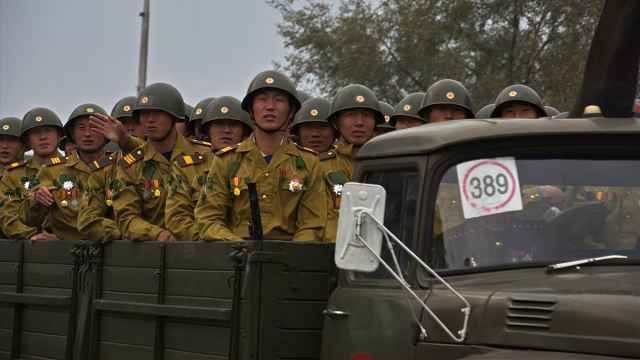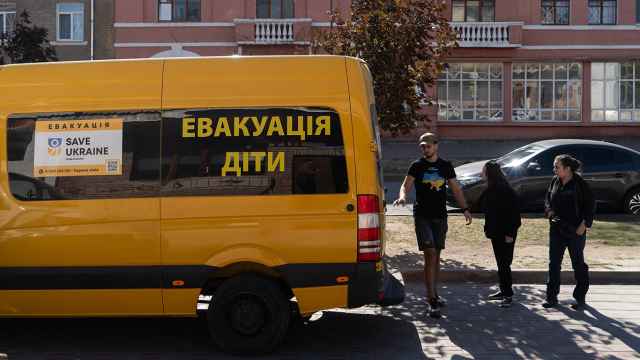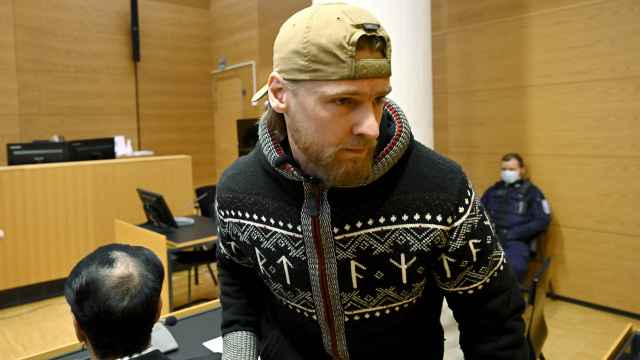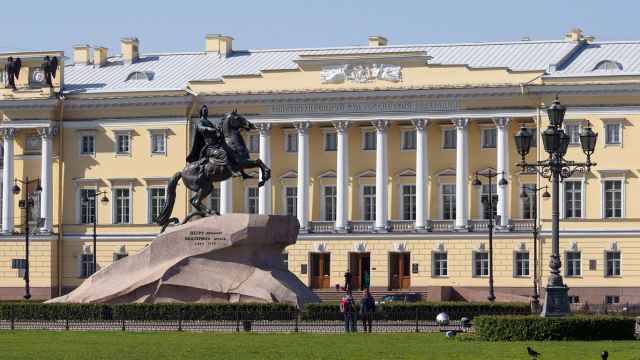My first attempt to launch from the Admiral Kuznetsov, Russia's only aircraft carrier, was a failure.
I sat in the cockpit of a Sukhoi Su-33 fighter jet, hands poised on the controls. My air traffic controller, Roman, spoke to me through a headset. Together, we worked through the pre-flight checklist. But I was having trouble making out his commands, his tinny voice drowned out by the high pitch wail of my Sukhoi’s engines.
It took me a moment to find a red button to my left. Several of them matched Roman’s muffled description. I found it and pressed down hard. A panel on my dashboard then flickered green, signaling that my plane’s flaps had extended into position. This would help me take off at a low speed. Glancing at the horizon, I was reminded why that is important: the end of the deck was just 100 meters in front of me.
The lack of distance would be less daunting on an American carrier. Kuznetsov lacks the powerful catapults that fling U.S. jets off their decks at high speeds. Acceleration is slow without the catapult. To take off, Russian planes have to hit the gas hard and hope for the best. A successful take off, as I would soon demonstrate, is not a given.
Carrier launches are high-stakes physics problems. A land-based runway is several hundred meters long. This gives pilots a decent margin of error as they accelerate to 300km/hr — a numerical sweet spot that sends Sukhois soaring into the sky. But Kuznetsov’s flight deck leaves pilots with little leeway. In the space of 100 meters, they must hit a speed of 150km/hr. The flaps increase the odds of staying dry.
To compensate for the lack of runway space, the Russian ship's bow angles upward like a ski jump. This gives the plane a final, encouraging kick into the air. As I stared at the ramp, contemplating the nature of God, Roman gave me a green light and I thrust the throttle forward. Roman’s voice gave way completely to the roar of the engines. The world trembled and my Sukhoi lumbered toward the end of the deck.
In moments, Kuznetsov disappeared below me. The sensation during takeoff was overwhelming. Through the headphones I heard Roman’s excited voice. Something was wrong. I was not accelerating fast enough. I looked to my display. Its ominous reading: 70km/hr. I was well below the required takeoff speed. I yanked back on my controls, orienting my vision toward the sky as I crashed hard into the Black Sea.
"How's the water?" Roman said through my headphones, his voice clear as day.
Labor of Love
None of this was real. Except for Roman. My stunted launch from Kuznetsov was a simulation. The experience of flying a Sukhoi is the main attraction of an aviation-themed bar and restaurant run by a former Soviet air force officer, Mikhail Kozhevnikov, and a group of aviation enthusiasts. Known as Aviator, the purpose of the venue is to "promote public interest in flight," says Kozhevnikov.
In the bar, located on an embankment in Moscow’s Taganka district, other customers can observe your simulated flight on-screen. The simulator provides a "99 percent realistic" experience, he says.
Beyond the realism of the simulator cockpit — which moves and shakes along with your virtual Sukhoi — I was skeptical of the claim. But after taking a $30-million Su-33 fighter jet for a swim, I couldn’t help but reconsider. And Kozhevnikov’s simulator features physical and sensory stimuli to make the game as authentic as possible.
Most of Kozhevnikov’s time in the service was spent at airbases in and around Russia’s southern Caucasus region. This also happens to be the region his simulation operates in. But he was never able to become a pilot. “Bad eyesight,” he tells me while I change into a special flight suit.
The suit is a key part of the simulator’s design. Fighter jets move fast, and pilots can experience intense forces while turning — like passengers in a car feel during a sharp turn. The suit simulates the pressure of high-intensity turns as you dip, dive and wind around the sky. It does this by inflating to squeeze your thighs and torso like a blood pressure monitor.
Kozhevnikov and his crew built the simulator from commercial parts. And it is similar to a handful of other simulators that have popped up in recent years. But he says the mechanisms that move the model cockpit are theirs. They also modified the game software to work with their machinery and pressure suit.
Basic Training
The combined sensations of pressure from the suit, the movement of the simulator, and the noise of the engines can at first feel overwhelming. But Kozhevnikov’s flight program takes things slow, and introduces wannabe pilots to key concepts one step at a time. After completing my training, I asked to practice takeoffs and landings on Kuznetsov.
Both Roman and Kozhevnikov warned me it would be difficult. After the disaster of my first launch attempt, I wondered if they might have a point. After all, the real challenge is not taking off from the carrier, but landing on it. In my first attempt, I watched as a virtual Kuznetsov vanished below me. I overshot the mark.
I stuck the landing on my second attempt. Roman was impressed. “Very well done!” he piped in over the headphones. “I didn’t think you were going to make it.”
But I wasn’t satisfied. I had yet to enjoy the full Kuznetsov experience, I thought to myself, and so I pulled up the ramp to try again: Another flawless launch, followed by a lazy loop around as I lined up my approach. Everything was going according to plan when I got what I wished for: an almost perfect landing followed by near-death experience. My Sukhoi failed to stop.
It was as if the arrester wire, which catches planes on landing, snapped. It was a blow-by-blow repeat of a problem that saw two of Kuznetsov’s planes crash in the ocean during its deployment to Syria last year. In reality, I probably just missed the wire. Before I could react, my plane rolled off the front of the deck. I saved myself by hitting the gas. Hard. A panic reflex. I went up again, and then back around.
As I came in for my final approach, Roman began to warn me that I was too high. On command, I lowered the nose to drop my altitude, but I overcompensated. The last thing I saw was the double-headed eagle, Russia’s national crest, on the stern of Kuznetsov. Then, darkness.
A Message from The Moscow Times:
Dear readers,
We are facing unprecedented challenges. Russia's Prosecutor General's Office has designated The Moscow Times as an "undesirable" organization, criminalizing our work and putting our staff at risk of prosecution. This follows our earlier unjust labeling as a "foreign agent."
These actions are direct attempts to silence independent journalism in Russia. The authorities claim our work "discredits the decisions of the Russian leadership." We see things differently: we strive to provide accurate, unbiased reporting on Russia.
We, the journalists of The Moscow Times, refuse to be silenced. But to continue our work, we need your help.
Your support, no matter how small, makes a world of difference. If you can, please support us monthly starting from just $2. It's quick to set up, and every contribution makes a significant impact.
By supporting The Moscow Times, you're defending open, independent journalism in the face of repression. Thank you for standing with us.
Remind me later.






